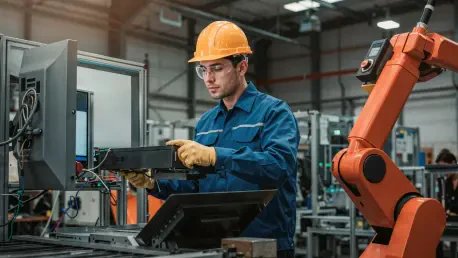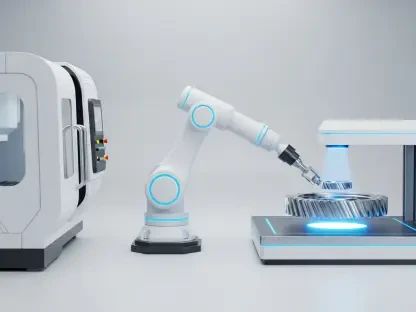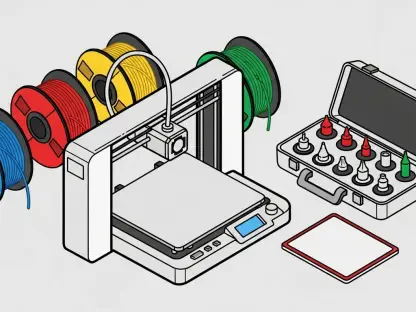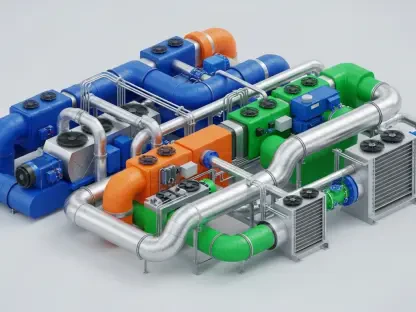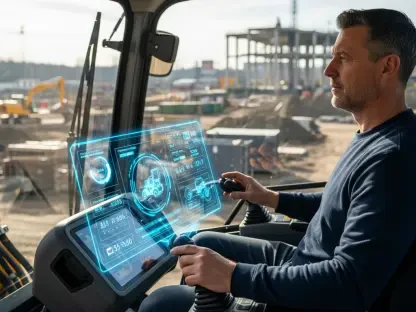The global industrial robots market experienced a notable downturn in 2024, showcasing a 5.8% year-over-year contraction that followed a slump in the preceding year. The primary contributors to this decline were subdued manufacturing activity and a decrease in robot prices, compounded by high-interest rates in Western markets and inadequate demand in Asia. These factors collectively led to a significant reduction in production investment across major regions. Furthermore, within the industrial robots sector, competition intensified as manufacturers struggled to maintain market share over profitability, squeezing margins for producers. Despite these challenges, the outlook for the industrial robotics industry suggests a brighter future, beginning with a gradual recovery in 2025 and projecting growth into 2029.
Regional Market Dynamics
The report from Interact Analysis forecasts key changes across global regions, with Europe anticipated to lag behind due to an 8.1% market contraction in 2024. Meanwhile, the Asia-Pacific region is slated to maintain dominance with its high concentration of vendors and substantial order volumes, ensuring steady growth. The associated competitiveness in APAC has resulted in robot prices being lower than in other major regions, solidifying its leading position. Conversely, the Americas are expected to sustain market standing, bolstered by U.S. reshoring initiatives and emerging Latin American market potentials. While Europe’s outlook appears less optimistic, its manufacturing sector may capitalize on global economic cycles, lending some advantage to industrial robots recovery.
The trajectory across the Europe, Middle East, and Africa (EMEA) region suggests slower growth compared to APAC and the Americas in terms of compound annual growth rate. Despite this, the EMEA region is projected to remain the second-largest market for industrial robots. This position highlights the potential resilience and capacity for maintaining relevance within the global market, even amid comparatively slower growth trends. These regional insights are crucial for comprehending the varied responses and adaptations within the robotics industry, especially those influenced by geopolitical and economic variables.
Sector-Specific Trends
A nuanced assessment of industry-specific performances reveals that the automotive sector struggled notably in 2024, impacting demand for industrial robots in general manufacturing fields such as electronics, metals, and plastics & rubber. This diminished demand painted a complex picture for industries dependent on robotic automation as integral components of their operations. However, consumer-related sectors, particularly food & beverage and life sciences, showed resilience that buffered some broader declines. Pockets of demand in these industries indicate the evolving landscape where robotic integration is thriving, driven by specific consumer needs.
Analysts have noted variations in performance categories concerning different industries which played significant roles in shaping the industrial robots market. Enhanced automation in sectors oriented toward daily consumer goods exhibited notable robustness, exemplifying the shift from traditional manufacturing dependence. These shifts underscore evolving market dynamics that challenge conventional productivity expectations, prompting sectors to adapt by adopting innovative technological solutions for automation, hence mitigating widespread market discrepancies.
Prospective Recovery and Analysis
Interact Analysis has projected a comprehensive recovery for the industrial robots market beginning in 2025, with promising YoY growth extending through 2029 across all major regions. Analysts, including Samantha Mou, highlight the optimistic prospects for stronger growth in 2026, where market sentiment is improving within the Americas and Asia. Macro conditions favor these regions; however, Europe is showing weak recovery signals, resulting in modest growth forecasts for the EMEA region. While regional discrepancies persist, the broader manufacturing sector in Europe could still benefit from prevailing cycles in the global economy.
The report offers in-depth insights into market size and forecasts for the industrial robotics industry, segmented into revenue and shipment expectations. These projections, covering robot type, payload, industry, and application, furnish stakeholders with detailed perspectives for strategic planning. Interact Analysis emphasizes the significance of understanding technological advancements that propel industrial automation, laying the groundwork for informed decisions within this rapidly evolving sector.
Reflections and Outlook
Interact Analysis’s report predicts significant shifts across global regions, with Europe facing an 8.1% market downturn in 2024. In contrast, the Asia-Pacific (APAC) region is set to maintain its stronghold, thanks to a high number of vendors and considerable order volumes, which ensure continuous growth. The competitive landscape in APAC has kept robot prices more affordable compared to other global markets, reinforcing its leading position. In the Americas, market stability is expected, driven by U.S. reshoring and rising opportunities in Latin America. Although Europe’s outlook is less promising, its manufacturing industry might leverage global economic cycles, aiding industrial robot recovery.
Looking at the Europe, Middle East, and Africa (EMEA) region, while its growth will be slower compared to APAC and the Americas, it is forecasted to remain the second-largest market for industrial robots. This demonstrates EMEA’s resilience and capacity to stay relevant globally, despite slower growth trends. These insights are vital for understanding how the robotics industry adapts to geopolitical and economic factors worldwide.
